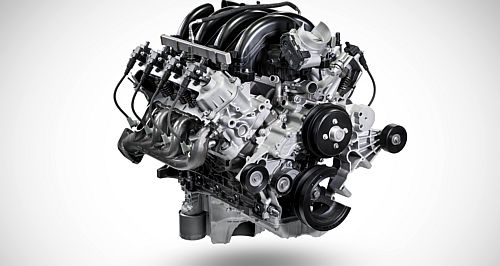Ford patents potential ICE-saving technology

FORD has filed a new patent with the United States Patent and Trademark Office that could potentially extend the life of its current internal combustion engine range.
As reported by US publication CarBuzz this week, the patent details how the more efficient bleeding of vapour created by the PCV (Positive Crankcase Ventilation) system – or any similar evaporative emissions system – into the precombustion chamber could reduce fuel consumption and emissions.
While the system can trace its origins to WW2 – designed initially to allow tanks to ford deep water – the enhancements to the PCV system detailed in Ford’s new patent allow faster purging of gases back into the intake manifold, preventing the likelihood of fuel-rich gases being vented to atmosphere.
The Ford patent adjusts the flow of unspent ventilated crankcase vapours and other emissions delivered from the vehicle’s charcoal canister, capturing their remaining potential energy for combustion.
The idea is similar to those already under development at Mazda and Porsche, and has the added benefit of extracting additional performance, and reducing carbon build-up on the intake and exhaust valves, further benefitting efficiency and longevity.
“A controller increases the amount of fuel that is supplied via an igniter in response to purging fuel vapours from a carbon filled canister, and where the igniter includes a pre-chamber,” explains the patent.
“By increasing the amount of fuel that is supplied to an igniter that includes a pre-chamber in response to purging of fuel vapours from a carbon filled canister, it may be possible to provide the technical result of improving combustion stability while purging an evaporative emissions system so that flow through a carbon filled canister may be increased.
“In particular, the igniter may increase a range of fuel/air ratios at which combustion stability may be acceptable. Further, it may be possible to increase flow rates of hydrocarbons from a carbon filled canister that may be emptied soon than if the amount of fuel that is supplied to the igniter is not increased.”
While the idea seems good in theory, CarBuzz is quick to point out that the added complexity of the system may cause an increase in manufacturing costs. The more advanced system may also prove more difficult to maintain in a vehicle’s later years.



